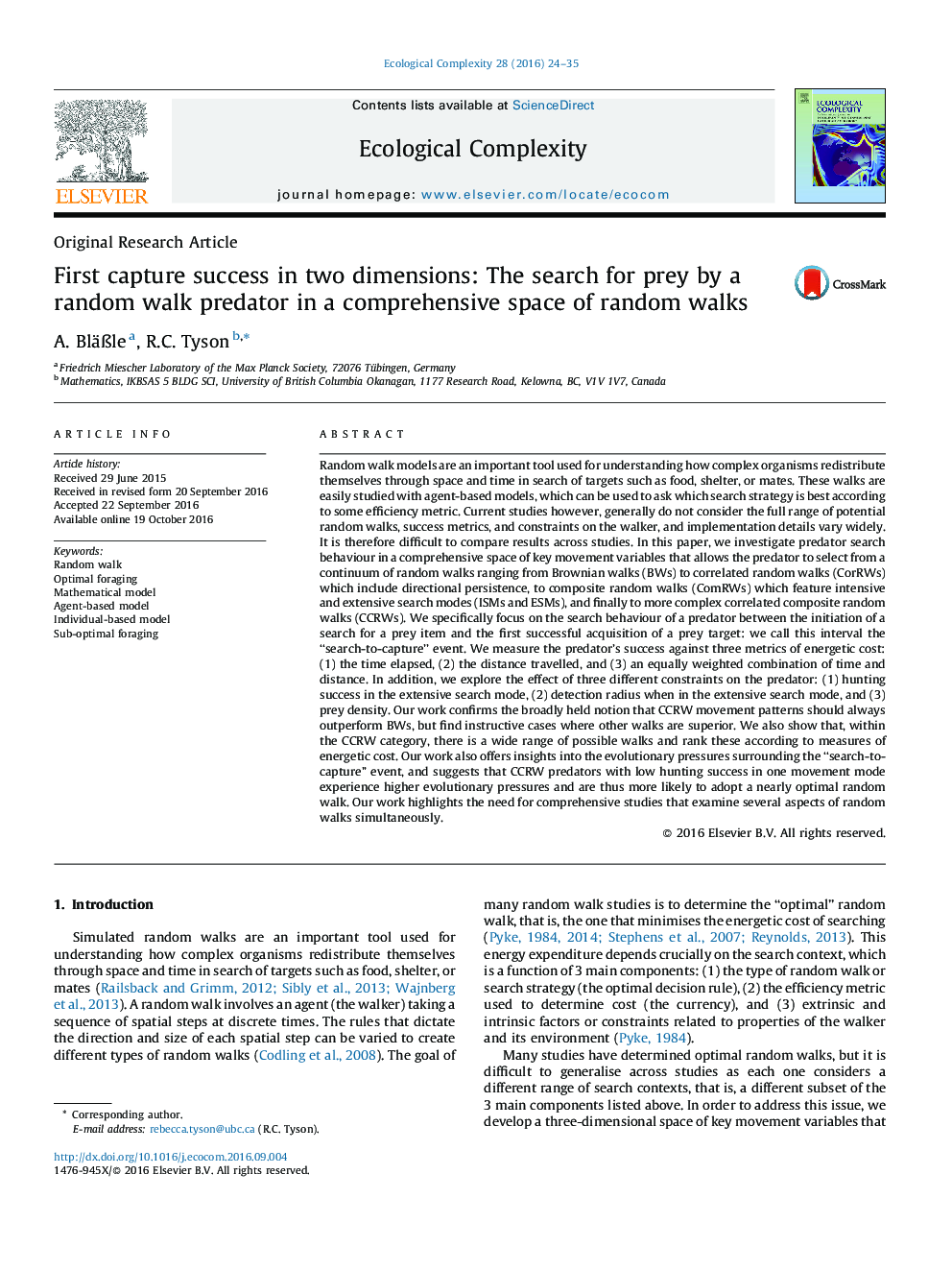| کد مقاله | کد نشریه | سال انتشار | مقاله انگلیسی | نسخه تمام متن |
|---|---|---|---|---|
| 8844874 | 1617086 | 2016 | 12 صفحه PDF | دانلود رایگان |
عنوان انگلیسی مقاله ISI
First capture success in two dimensions: The search for prey by a random walk predator in a comprehensive space of random walks
ترجمه فارسی عنوان
اولین موفقیت را در دو بعد سنجید: جستجو برای شکار توسط شکارچی تصادفی در یک فضای جامع از مسیرهای تصادفی
دانلود مقاله + سفارش ترجمه
دانلود مقاله ISI انگلیسی
رایگان برای ایرانیان
کلمات کلیدی
پیاده روی تصادفی، تغذیه مطلوب، مدل ریاضی، مدل مبتنی بر عامل، مدل مبتنی بر فرد فرآوری غیر مطلوب،
موضوعات مرتبط
علوم زیستی و بیوفناوری
علوم کشاورزی و بیولوژیک
بوم شناسی، تکامل، رفتار و سامانه شناسی
چکیده انگلیسی
Random walk models are an important tool used for understanding how complex organisms redistribute themselves through space and time in search of targets such as food, shelter, or mates. These walks are easily studied with agent-based models, which can be used to ask which search strategy is best according to some efficiency metric. Current studies however, generally do not consider the full range of potential random walks, success metrics, and constraints on the walker, and implementation details vary widely. It is therefore difficult to compare results across studies. In this paper, we investigate predator search behaviour in a comprehensive space of key movement variables that allows the predator to select from a continuum of random walks ranging from Brownian walks (BWs) to correlated random walks (CorRWs) which include directional persistence, to composite random walks (ComRWs) which feature intensive and extensive search modes (ISMs and ESMs), and finally to more complex correlated composite random walks (CCRWs). We specifically focus on the search behaviour of a predator between the initiation of a search for a prey item and the first successful acquisition of a prey target: we call this interval the “search-to-capture” event. We measure the predator's success against three metrics of energetic cost: (1) the time elapsed, (2) the distance travelled, and (3) an equally weighted combination of time and distance. In addition, we explore the effect of three different constraints on the predator: (1) hunting success in the extensive search mode, (2) detection radius when in the extensive search mode, and (3) prey density. Our work confirms the broadly held notion that CCRW movement patterns should always outperform BWs, but find instructive cases where other walks are superior. We also show that, within the CCRW category, there is a wide range of possible walks and rank these according to measures of energetic cost. Our work also offers insights into the evolutionary pressures surrounding the “search-to-capture” event, and suggests that CCRW predators with low hunting success in one movement mode experience higher evolutionary pressures and are thus more likely to adopt a nearly optimal random walk. Our work highlights the need for comprehensive studies that examine several aspects of random walks simultaneously.
ناشر
Database: Elsevier - ScienceDirect (ساینس دایرکت)
Journal: Ecological Complexity - Volume 28, December 2016, Pages 24-35
Journal: Ecological Complexity - Volume 28, December 2016, Pages 24-35
نویسندگان
A. BläÃle, R.C. Tyson,
